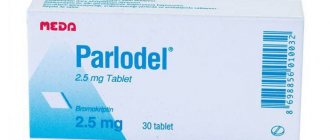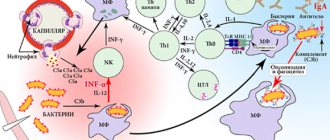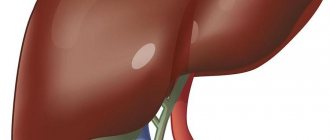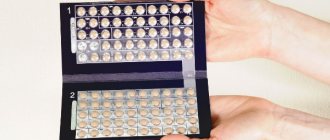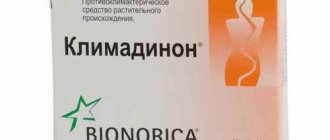What is the medicine "Bergolak"
According to its pharmacokinetics, this drug inhibits the release of prolactin in the body, which is responsible for lactation after childbirth. It happens that it is impossible to stop breastfeeding a child without a drug that can physically reduce the formation of prolactin. Sometimes the production of breast milk should be stopped because it is not suitable for the baby, or the woman’s health does not allow her to breastfeed, or a hyperlactation process is observed.
Women's reviews evaluate Bergolak as an effective remedy for reducing prolactin secretion.
This remedy has several substitutes. The main substance of the drug "Bergolak" - cabergoline - is included in such drugs as "Dostinex", "Cabaser", "Agalates", "Alactin".
The product "Bergolak" is a Russian-made medicine. The drugs "Dostinex" and "Cabaser" are produced in Italy, "Agalates" - in the USA and "Alactin" - in Israel.
Description of the drug
Bergolak - Dopamine receptor agonist, ergoline derivative, suppresses prolactin secretion. Stimulates dopamine D2 receptors of lactotropic cells of the pituitary gland; in high doses it has a central dopaminergic effect. Reduces the concentration of prolactin in the blood, restores the menstrual cycle and fertility. By reducing the concentration of prolactin in the blood of women, the pulsating secretion of gonadotropins and the release of luteinizing hormone in the middle of the cycle are restored, anovulatory cycles are eliminated and the concentration of estrogen in the body increases, the severity of hypoestrogenic (weight gain, fluid retention, osteoporosis) and hyperandrogenic (acne, hirsutism) is reduced ) symptoms.
In men, it reduces the decrease in libido caused by hyperprolactinemia, impotence (with a decrease in the concentration of prolactin, the concentration of testosterone increases), gynecomastia, and lactorrhea. Pituitary macroadenomas and associated symptoms (headache, impaired visual fields and acuity, functions of the cranial nerves and the anterior pituitary gland) are subject to reverse development. Reduces the concentration of prolactin in patients with prolactinoma and pseudoprolactinoma (in the latter - without reducing the size of the pituitary adenoma). A decrease in prolactin concentration is observed 3 hours after administration and persists for 7-28 days in patients with hyperprolactinemia and 14-21 days in cases of suppressed postpartum lactation. A decrease in prolactin concentration occurs within 2-4 weeks of treatment. advertising
Analogs
Agalathes
Teva, Czech Republic
Price from 409 to 1269 rubles.
Agalates is a complete analogue of Bergolac, since the tablet of this medicine contains the same component - cabergoline. The only difference is in the country of origin. There is no difference in the effect on the body. The release form of the drug Agalates is tablets.
Pros:
- Agalates reduces prolactin levels in the blood well
- Can be used in the treatment of amenorrhea and MC disorders
- Convenient dosage regimen.
Minuses:
- More expensive than the domestic analogue
- Causes multiple adverse reactions
- You cannot combine Agalates with macrolides.
Purpose of the drug
So, the drug "Bergolak" is primarily considered a medicine for women, prescribed for hyperprolactenemia, which manifests itself in galactorrhea, amenorrhea, oligomenorrhea, and anovulation.
By suppressing the secretion of prolactin, Bergolak restores fertility and the menstrual cycle, while increasing the concentration of estrogen, reducing the manifestation of hypoestrogenic and hyperandrogenic diagnoses.
Indications for use of the drug
The drug is used for:
- Physiological lactation in the postpartum period, if necessary, its termination.
- Already established lactation of the postpartum period to suppress it.
- Diseases and symptoms associated with increased concentrations of lactotropic hormone in the blood, including the absence of menstruation, ovulation, and the release of milk or colostrum not associated with feeding.
- A benign tumor of the pituitary gland that stimulates the production of additional lactotropic hormone above normal.
- Elevated levels of prolactin of unknown etiology.
- Weakness of the cerebral diaphragm and penetration of the soft membranes of the brain into the space of the sella turcica with severe hyperprolactinemia.
Bergolak - instructions for use, reviews, analogs and release forms (0.5 mg tablets) of a drug for the treatment of hyperprolactinemia and cessation of postpartum lactation in adults, children and pregnancy. Compound
Bergolak is a dopamine receptor agonist, an ergoline derivative, suppresses the secretion of prolactin. Stimulates dopamine D2 receptors of lactotropic cells of the pituitary gland; in high doses it has a central dopaminergic effect. Reduces the concentration of prolactin in the blood, restores the menstrual cycle and fertility. By reducing the concentration of prolactin in the blood of women, the pulsating secretion of gonadotropins and the release of luteinizing hormone in the middle of the cycle are restored, anovulatory cycles are eliminated and the concentration of estrogen in the body increases, the severity of hypoestrogenic (weight gain, fluid retention, osteoporosis) and hyperandrogenic (acne, hirsutism) is reduced ) symptoms.
In men, it reduces the decrease in libido caused by hyperprolactinemia, impotence (with a decrease in the concentration of prolactin, the concentration of testosterone increases), gynecomastia, and lactorrhea. Pituitary macroadenomas and associated symptoms (headache, impaired visual fields and acuity, functions of the cranial nerves and the anterior pituitary gland) are subject to reverse development. Reduces the concentration of prolactin in patients with prolactinoma and pseudoprolactinoma (in the latter - without reducing the size of the pituitary adenoma). A decrease in prolactin concentration is observed 3 hours after administration and persists for 7-28 days in patients with hyperprolactinemia and 14-21 days in cases of suppressed postpartum lactation. A decrease in prolactin concentration occurs within 2-4 weeks of treatment.
Compound
Cabergoline + excipients.
Pharmacokinetics
Absorption is high and does not depend on food intake. Plasma protein binding - 41-42%. Actively metabolized. Metabolites have a significantly lesser effect in suppressing prolactin secretion compared to cabergoline. About 18% and 72% of the dose of cabergoline taken is excreted by the kidneys and through the intestines, respectively, while 2-3% is excreted by the kidneys as unchanged cabergoline.
Indications
- prevention of postpartum lactation;
- suppression of already established postpartum lactation;
- treatment of disorders associated with hyperprolactinemia, including amenorrhea, oligomenorrhea, anovulation, galactorrhea;
- prolactin-secreting pituitary adenomas (micro- and macroprolactinomas); idiopathic hyperprolactinemia; empty sella syndrome in combination with hyperprolactinemia.
Release forms
Tablets 0.5 mg (in blisters of 2 and 8 pieces).
Instructions for use and dosage regimen
The drug is taken orally with meals.
To prevent lactation after childbirth - 1 mg once (2 tablets) on the first day after birth.
To suppress established lactation - 0.25 mg (1/2 tablet) 2 times a day every 12 hours for 2 days (total dose - 1 mg).
In order to reduce the risk of orthostatic hypotension in breastfeeding mothers, a single dose of Bergolac should not exceed 0.25 mg.
For the treatment of disorders associated with hyperprolactinemia: the recommended starting dose is 0.5 mg per week in 1 dose (1 tablet) or in 2 doses (1/2 tablet, for example, on Monday and Thursday). The weekly dose should be increased gradually - by 0.5 mg at monthly intervals until the optimal therapeutic effect is achieved. The therapeutic dose is usually 1 mg per week, but can range from 0.25 to 2 mg per week.
The maximum dose for patients with hyperprolactinemia should not exceed 4.5 mg per week.
Depending on tolerability, the weekly dose of Bergolak can be taken once or divided into 2 or more doses per week. Dividing the weekly dose into several doses is recommended when prescribing the drug at a dose of more than 1 mg per week.
The likelihood of side effects can be reduced by starting therapy with Bergolak with a low dose (for example, 0.25 mg once a week), followed by a gradual increase until the therapeutic dose is reached. To improve the tolerability of the drug, if severe side effects occur, a temporary dose reduction followed by a more gradual increase (for example, an increase of 0.25 mg per week every 2 weeks) is possible.
Side effect
- heartbeat;
- rushes of blood to the skin of the face;
- spasms of blood vessels in the fingers (like other ergot derivatives, cabergoline can have a vasoconstrictor effect);
- valvulopathy;
- orthostatic hypotension (with long-term treatment with cabergoline - hypotensive effect);
- dizziness;
- headache;
- increased fatigue;
- drowsiness;
- depression;
- mania;
- asthenia;
- paresthesia;
- fainting;
- nausea, vomiting;
- pain in the epigastric region;
- abdominal pain;
- constipation;
- gastritis;
- dyspepsia;
- liver dysfunction;
- hypersensitivity reactions;
- skin rash;
- mammalgia;
- nose bleed;
- transient hemianopsia;
- muscle cramps of the lower extremities;
- alopecia;
- increased CPK activity in blood serum;
- swelling;
- pleural fibrosis;
- respiratory disorders (including respiratory failure).
Contraindications
- age under 16 years (safety and effectiveness in this category of patients have not been established);
- rare hereditary forms of galactose intolerance, congenital lactase deficiency lapp or impaired absorption of glucose-galactose (since the drug contains lactose);
- hypersensitivity to cabergoline or other components of the drug, as well as to any ergot alkaloids.
The drug should be prescribed with caution for the following conditions and/or diseases:
- arterial hypertension that developed during pregnancy (for example, preeclampsia) and/or postpartum arterial hypertension;
- severe diseases of the cardiovascular system, Raynaud's syndrome;
- peptic ulcer, gastrointestinal bleeding;
- severe liver failure;
- severe psychotic and cognitive disorders (including history);
- the presence of fibrotic changes in the heart (valvulopathy) and respiratory system (pleurisy/pleural fibrosis), incl. in the anamnesis;
- simultaneous use with drugs that have a hypotensive effect (due to the risk of developing orthostatic hypotension).
Use during pregnancy and breastfeeding
Since controlled clinical studies with the use of Bergolak in pregnant women have not been conducted, the use of the drug during pregnancy is possible only in cases of extreme necessity, when the potential benefit of using the drug for the woman significantly outweighs the possible risk to the fetus.
Pregnancy should be avoided for at least one month after stopping cabergoline, given the long T1/2 of the drug and the limited data on its effects on the fetus (according to available data, the use of cabergoline at a dose of 0.5-2 mg per week for disorders associated with hyperprolactinemia, was not accompanied by an increase in the incidence of miscarriages, premature births, multiple pregnancies and congenital malformations).
If pregnancy occurs during treatment with cabergoline, the advisability of discontinuing the drug should be considered, also taking into account the ratio of the potential benefits of using the drug for the woman and the possible risk to the fetus.
Since Bergolac suppresses lactation, the drug should not be prescribed to mothers who wish to breastfeed. Breastfeeding should be discontinued during treatment with cabergoline.
Use in children
Contraindicated in children and adolescents under 16 years of age (safety and effectiveness in this category of patients have not been established).
Use in elderly patients
No studies have been conducted on the use of cabergoline in elderly patients with disorders associated with hyperprolactinemia.
special instructions
Before prescribing Bergolak, it is necessary to conduct a complete study of the function of the pituitary gland.
When increasing the dose of the drug, patients should be under medical supervision in order to establish the lowest dose that provides a therapeutic effect. During the treatment period, it is recommended to regularly (once a month) determine the concentration of prolactin in the blood serum. Normalization of prolactin concentrations is usually observed within 2-4 weeks of cabergoline therapy.
After discontinuation of cabergoline, a relapse of hyperprolactinemia is usually observed, but in some patients a persistent decrease in prolactin concentration persists for several months. Most women continue to have ovulatory cycles for at least 6 months after stopping cabergoline.
Bergolak restores ovulation and fertility in women with hyperprolactinemic hypogonadism. Since pregnancy may occur before menstruation returns, it is recommended that pregnancy tests be performed at least once every 4 weeks during the amenorrheic period, and after menstruation returns, whenever menstruation is more than 3 days late.
Barrier methods of contraception should be used during treatment with cabergoline, as well as after discontinuation of the drug until anovulation recurs. If pregnancy occurs during treatment, the advisability of discontinuing the drug should be considered. Women who become pregnant should be under medical supervision to promptly identify symptoms of an enlarged pituitary gland (during pregnancy, pre-existing pituitary tumors may increase in size).
After long-term use of cabergoline, pleural effusion/pleural fibrosis and valvulopathy were observed in patients, therefore cabergoline should be used with caution in patients with current manifestations and/or clinical symptoms of cardiac dysfunction, incl. in the anamnesis.
In patients with hypertension that developed during pregnancy (for example, preeclampsia) and/or postpartum hypertension, cabergoline is prescribed only in cases where the potential benefit of the drug significantly outweighs the possible risk.
The use of Bergolak causes drowsiness. In patients with Parkinson's disease, the use of dopamine receptor agonists may cause sudden sleep onset. In such cases, it is recommended to reduce the dose of cabergoline or discontinue therapy.
No studies have been conducted on the use of cabergoline in elderly patients with disorders associated with hyperprolactinemia.
Impact on the ability to drive vehicles and operate machinery
During the treatment period, it is recommended to refrain from driving vehicles and performing other activities that require increased concentration and speed of psychomotor reactions.
Drug interactions
Concomitant use with ergot alkaloids and their derivatives is not recommended (with long-term therapy with cabergoline).
With simultaneous use, dopamine receptor antagonists (phenothiazine derivatives, butyrophenone, thioxanthene; metoclopramide) may weaken the effect of Bergolak.
The simultaneous use of cabergoline with macrolides is not recommended due to a possible increase in the concentration of cabergoline in the blood plasma. The mechanism of interaction between macrolides and cabergoline has not been sufficiently studied, but is apparently explained by the ability of macrolides and cabergoline to competitively inhibit the cytochrome P450 system.
Analogues of the drug Bergolak
Structural analogues of the active substance:
- Agalates;
- Dostinex;
- Cabergoline.
Analogs for therapeutic effect (drugs to combat hyperprolactinemia):
- Abergeen;
- Agalates;
- Bromocriptine;
- Bromergon;
- Dostinex;
- Clostilbegit;
- Mastodinon;
- Serocriptine.
If there are no analogues of the drug for the active substance, you can follow the links below to the diseases for which the corresponding drug helps, and look at the available analogues for the therapeutic effect.
Indications for use
The use of Bergolak is indicated:
- In case of idiopathic hyperprolactinemia or disorders caused by pituitary adenoma
- To suppress lactation in the postpartum period
- If pathologies are detected that have developed against the background of progressive hyperprolactinemia (lack of ovulation, prolongation of the menstrual cycle, cessation of menstruation, galactorrhea)
- When diagnosing empty sella syndrome, which is combined with severe hyperprolactinemia.
Bergolak, like Dostinex, is actively used in sports. Bodybuilding enthusiasts use this drug to relieve side effects from taking steroids.
The effect of the drug on men's health
A drug that regulates lactation in women is effective in treating male potency. It turns out that an excess of prolactin can also be observed in the male body, and this leads to decreased libido and impotence. Disturbances at the hormonal level in men can lead to lactation gynecomastia - fluid discharge from the nipples. This picture is observed when the proportions of estrogen, androgens and progestrins produced are disturbed.
The product "Bergolak" is used by many men in the desire to prolong sexual pleasure during sexual intercourse. By suppressing the secretion of prolactin, you can achieve an increase in the number of orgasms.
Contraindications
Taking Bergolacac, like Dostinex, is contraindicated:
- Children under sixteen years of age
- In case of intolerance to a substance such as galatose and lactase deficiency
- In case of excessive sensitivity to cabergoline and other components of the drug
- In case of disturbances in the functioning of the cardiovascular system
- For psychosomatic pathologies and cognitive impairments
- In case of fibrotic pulmonary syndrome
- For ulcerative lesions of the gastrointestinal tract
- In case of disturbances in the activity of the liver, in particular when liver failure is detected.
How are the properties of the drug related to bodybuilding?
Many reviews about the Bergolak product say that the medicine in question is applicable in sports. Stopping the secretion of prolactin can not only have a positive effect on a woman’s health in terms of inhibiting lactation and restoring the menstrual cycle, as well as restoring male virility in men, but is also directly related to an increase in muscle mass.
Since the drug "Bergolak", among other things, effectively removes excess fluid from the body, it promotes a process such as drying, which allows athletes to achieve ideal muscle definition in the body.
Frequent use of steroids causes increased secretion of prolactin. The athlete needs to regulate his concentration, or rather reduce it to the normal level; this can be done with the help of the Bergolak product. This drug helps prevent athletes from feeling unwell; we are talking in particular about both women and men bodybuilders.
Many reviews of Bergolak praise the rapid recovery of the body after intense training. Well, since daily hard work significantly reduces libido, and many steroids negatively affect the potency of men, this drug and its substitutes mentioned above are a real salvation.
How to take Cabergoline (Bergolak) in bodybuilding
In order to reduce the risk of side effects from the gastrointestinal tract (diarrhea, nausea, vomiting) in bodybuilding, it is recommended to take Cabergoline (Bergolak) with meals, at any time of the day. The construction of the optimal regimen for taking the drug and dosage depends on the purpose of use: if the course contains progestin anabolic steroids (for example, trenbolone), then the medicine should be taken at a dose of 0.25 mg / every 4 days, starting from the second week of taking progestogens and two to three weeks after finishing a course of steroids. If you need to lower prolactin levels, the recommended dosage of Cabergoline is 0.25-0.50 mg/every 4 days.
First impression: purchasing the drug and its appearance
Consumer reviews about the drug "Bergolak" say that it can only be purchased with a special prescription. This is good, since women will not take it themselves, self-medicating. Therefore, the risk of unpleasant consequences of such therapy is reduced to zero. On the other hand, this approach is inconvenient, since in order to purchase another package (if necessary), you will have to go to the doctor again for a prescription.
You can purchase Bergolak in many pharmacy chains throughout Russia. The cost of two capsules is about 300 rubles, and 8 tablets will cost you 900 rubles. It is more profitable to buy a larger package, but the patient does not always need the same number of pills as in the case of stopping breastfeeding.
The box with the drug "Bergolak" - reviews say - is small. It contains instructions for use, which you must read before taking the tablets. There is also a polymer jar containing capsules. The tablets are oblong in shape and are demarcated on one side by a score line.
Special instructions:
Before prescribing cabergoline, it is necessary to conduct a complete study of pituitary function.
When increasing the dose of the drug, patients should be under medical supervision in order to establish the lowest dose that provides a therapeutic effect. During the treatment period, it is recommended to regularly (once a month) determine the concentration of prolactin in the blood. Normalization of prolactin concentrations is usually observed within 2-4 weeks of cabergoline therapy.
After discontinuation of cabergoline, a relapse of hyperprolactinemia is usually observed; however, in some patients, a persistent decrease in prolactin concentration persists for several months. Most women continue to have ovulatory cycles for at least 6 months after stopping cabergoline.
Cabergoline restores ovulation and fertility in women with hyperprolactinemic hypogonadism. Since pregnancy can occur before the return of menstruation, it is recommended to carry out pregnancy tests at least once every 4 weeks during the amenorrhea period and after the return of menstruation - whenever a delay of more than 3 days is noted. Barrier methods of contraception should be used during treatment with cabergoline and also after discontinuation of the drug until anovulation recurs. If pregnancy occurs during treatment, the advisability of discontinuing the drug should be considered (see section “Pregnancy and Lactation”). Women who become pregnant should be under medical supervision to promptly identify symptoms of an enlarged pituitary gland (during pregnancy, pre-existing pituitary tumors may increase in size).
After long-term use of cabergoline, patients experienced pleural effusion/pleural fibrosis and valvulopathy; therefore, cabergoline should be used with caution in patients with current manifestations and/or clinical symptoms of cardiac dysfunction, incl. in the anamnesis.
For patients with hypertension that developed during pregnancy (for example, preeclampsia) and/or postpartum hypertension, cabergoline is prescribed only in cases where the potential benefit of the drug significantly outweighs the possible risk.
The use of cabergoline causes drowsiness. In patients with Parkinson's disease, the use of dopamine receptor agonists may cause sudden sleep onset. In such cases, it is recommended to reduce the dose of cabergoline or discontinue therapy. Studies on the use of cabergoline in elderly patients with disorders associated with hyperprolactinemia have not been conducted.
Special instructions when using Bergolak
In pediatrics, the drug is used in adolescents from the age of sixteen; the effects of the drug on children under this age have not been sufficiently studied. For elderly patients over sixty-five years of age, dosage reduction is usually required to avoid side effects. If renal function is impaired and the glomerular filtration rate is maintained at more than 30 milliliters per minute, no dose adjustment is required. For liver pathologies of class A according to the Child-Pugh scale, no adjustment is needed. In patients with more severe damage to these organs, taking medication tablets is contraindicated. It is necessary to regularly monitor the level of liver enzymes in a biochemical blood test, blood pressure levels and the concentration of lactotropic hormone in the blood.
Use of Bergolak tablets during pregnancy and before stopping breastfeeding
Before taking the medication, pregnancy must be excluded; use during pregnancy is strictly contraindicated. The effects on the fetus have not been sufficiently studied. It is possible that the main pharmaceutical substances are able to penetrate the blood-milk barrier. The medication cannot be used during breastfeeding, as the composition of human milk may change.
Impact on the ability to drive vehicles. Wed and fur.:
During the treatment period, it is recommended to refrain from driving vehicles and performing other activities that require increased concentration and speed of psychomotor reactions.
Side effects
Although the drug is quite good, when taking it, side symptoms from the cardiovascular system, gastrointestinal tract, nervous system, as well as allergic manifestations may be observed.
Other reactions cannot be excluded: edema, convulsive syndrome, alopecia, mastodynia, deterioration of the respiratory system, transient hemianopia, pleural fibrosis, nosebleeds.
The manifestation of negative reactions depends mainly on the doses of drugs taken. The observed side symptoms usually disappear after completion of treatment therapy.
Statistics, facts, manufacturer
Bergolak (trade name) is a drug of synthetic origin, a stimulator of dopamine receptors in the brain, inhibiting the production of the hormone prolactin. It is used both at outpatient clinics and at the inpatient stage of treatment for women.
The medicine is produced by a pharmaceutical company founded in 1997. The manufacturer supplies the market with a large number of synthetic drugs and biologically active food additives for the treatment of cancer, as well as generics and medical patches.
One of the pathologies for treatment with Bergolak tablets is disruption of the pituitary gland towards hypersecretion. The pituitary gland is a gland in the brain. It produces a large amount of hormones that affect the hormonal function of other endocrine organs or have a direct effect. Hypopituitarism is a disease accompanied by a decrease or complete absence of pituitary hormones.
The anterior lobe of the pituitary gland synthesizes several hormones, including adrenocorticotropic, somatotropic, thyroid-stimulating, follicle-stimulating, luteinizing hormones and prolactin. There are many reasons for the development of hypopituitarism:
- Primary damage to the anterior pituitary gland and dysfunction of cells that produce hormones.
- Secondary damage associated with pathology of the hypothalamus and central nervous system.
- Neoplasms in the brain that compress neighboring structures and impair functions.
- Vascular pathologies, their pathological local dilatation, inflammation of the arteries, hemorrhage into the pituitary gland, severe blood loss.
- Tuberculosis.
- Besnier-Beck-Schaumann disease.
- Syphilis.
- Previous inflammation of the soft meninges or substance of the brain.
- Traumatic brain injuries.
The hormones listed above affect other endocrine and mixed secretion glands, which in turn synthesize biologically active substances, affecting growth, maturation, and sexual function. With a lack of pituitary hormones, many hormonal-dependent processes are inhibited. The earliest manifestation of hypopituitarism can be considered a violation of sexual function, normal menstrual cycle, decreased libido in both men and women. Body hair falls out and the skin color becomes waxy. Hypothermia is often observed, body temperature does not rise above thirty-six degrees. The patient is concerned about fatigue, decreased performance and weakness. Children may experience serious disturbances in growth, maturation and development, both physical and intellectual. If any of these symptoms appear, you should contact your primary care physician or pediatrician, who will prescribe initial tests and refer you to an endocrinologist.
With a congenital deficiency of somatotropic hormone, pituitary dwarfism (dwarfism) develops. In such children, the first signs of the disease appear in the third year of life, when they begin to lag behind their peers in growth. At the same time, the body proportions remain normal and physiological, mental development does not suffer. With timely diagnosis, the disease can be successfully treated by introducing replacement therapy.
With hyperfunction of the pituitary gland, the development of hyperprolactinemia is possible - a condition in which the concentration of lactotropic hormone is increased. This can occur for physiological reasons: during the slow-wave sleep phase, during intense physical activity, lactation, pregnancy or stress. In addition, there are a number of pathological causes associated with organic (pituitary tumors) or functional (endocrine diseases, decompensated liver cirrhosis, Stein-Leventhal syndrome) damage. The clinical picture is varied. The most common symptoms and manifestations of hyperprolactinemia: impaired reproductive and menstrual function, decreased libido, galactorrhea, masculinization, excess growth of male-pattern terminal hair, breast cancer, metabolic systemic disorders with increased body weight, appetite, increased cholesterol concentration in the blood, low and very low density lipoproteins, which can lead to the development of atherosclerotic vascular lesions. In addition, insulin resistance may occur, blood pressure levels may increase, and the risk of developing type 2 diabetes mellitus increases. In patients with hyperprolactinemia, degenerative processes in bones and joints and autoimmune diseases are often associated.
To diagnose pituitary gland diseases, an analysis of the life history and disease, clinical examination, symptoms, laboratory and instrumental diagnostic methods, including biochemical tests, are used. It is important to determine the concentration of hormones in the blood, pharmacodynamic tests, gynecological examination and x-ray procedures.
Treatment consists of restoring normal hormone levels. With hyperprolactinemia, it is important to restore the regularity of the menstrual cycle and sexual function. Therapy uses diet, physical activity, physiotherapy, etiotropic, pathogenetic and symptomatic drugs. If necessary, combined with surgical and radiation methods.
Overdose
Accompanied by the following symptoms: nausea, vomiting, abdominal pain, constipation, decreased blood pressure, orthostatic hypotension, headache, convulsions, severe asthenia, sweating, drowsiness, psychomotor agitation, even psychosis and hallucinations.
For treatment, gastric lavage is performed and dopamine receptor antagonists are prescribed, including derivatives of Phenothiazine , Thioxanthene , Butyrophenone , Metoclopramide .
Composition and release form
The drug Bergolak is available in tablet form. They are white in color, oblong and convex in shape. Each tablet contains the active ingredient cabergoline 500 mcg.
Magnesium stearate, leucithin and lactopress are used as additional substances.
Bergolak goes on sale, packaged in polymer bottles of 2 or 8 tablets, which are packed in a cardboard box.
Clinical analysis of the drug
When to start conceiving?
After taking the medication, conception can begin within one month. If the patient becomes pregnant during therapy, it is necessary to consider the advisability of discontinuing the medication, taking into account the benefits and risks.
The drug is not prescribed to women who wish to breastfeed, therefore, if cabergoline therapy is necessary, breastfeeding should be stopped.
Instructions
The tablets are intended for oral administration. Recommended dosage:
- In order to prevent postpartum lactation: on the first day after birth – 1 mg once.
- Suppression of breastfeeding: 0.25 mg 2 times a day with an interval of 12 hours. Duration of treatment – 2 days. Due to the likelihood of developing orthostatic decrease in pressure, a single dose should not exceed 0.25 mg.
- Treatment of conditions caused by hyperprolactinemia: initial dosage – 0.5 mg per week, once or divided into 2 doses with an interval of 3 days.
Patient reviews
Larisa, 24 years old : “I decided to stop breastfeeding, since the child is already 2 years old. I took 2 tablets of Bergolak, but my milk did not decrease. I felt bad and fainted. I constantly feel weak. I’m still waiting for the pills to take effect.”
Galina, 32 years old : “I stopped breastfeeding my baby and because of this my menstrual cycle was disrupted. The gynecologist prescribed Bergolak tablets, and as a result, the milk burned out, and soon my periods went on schedule.”
Angelina, 26 years old : “Bergolak made me feel better on day 5. But still, sometimes I pumped my breasts a little. Then the mammary glands became soft, I think the pills did their job.”
